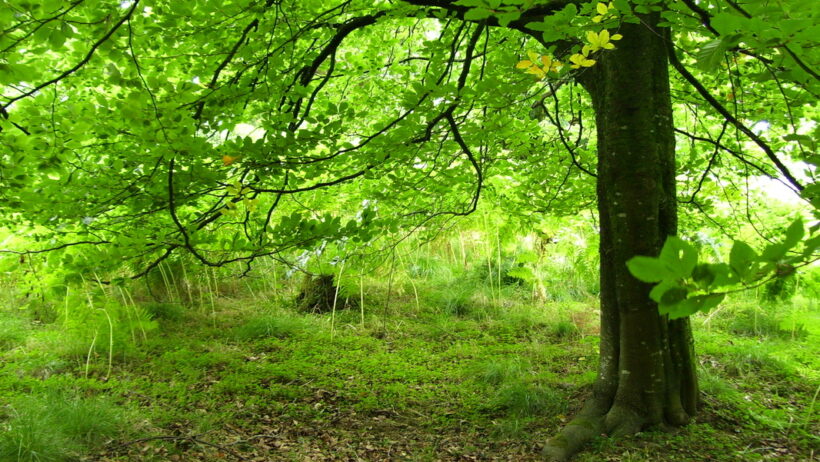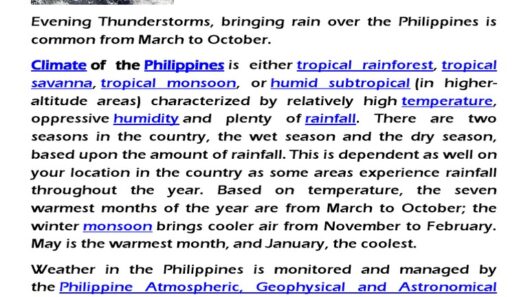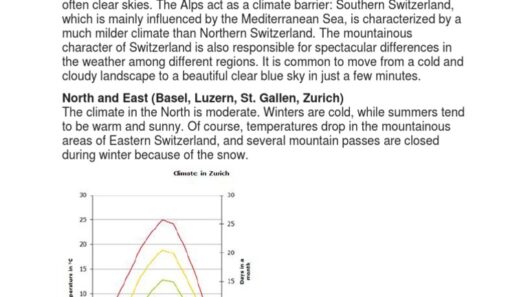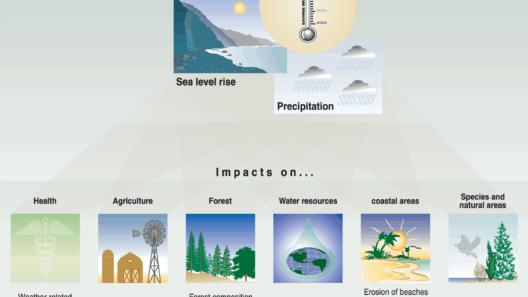The temperate deciduous forest, a biogeographical gem straddling the realms of moderate temperance and vibrant biodiversity, unfolds like a grand tapestry woven with threads of life. This climatic milieu showcases an intricate dance of seasons—an artistry that is at once mesmerizing and essential for the ecological balance of our planet. Understanding the climate of these forests requires delving into the fascinating interplay of temperature, precipitation, and seasonality, which combines to create an environment that is both unique and vital.
To begin, one must acknowledge the temperate zone, where these forests reside, flanked by the polar and tropical regions. Here lies a climate characterized by its distinct four seasons: spring, summer, autumn, and winter. Each season reflects not only a shift in temperature but also a profound metamorphosis in the forest’s landscape, much like the changing brushstrokes of a master painter. As the seasons transition, they impart an unmistakable identity to the forest—a cyclical symphony that resonates through the air.
During spring, the temperate deciduous forest awakens from the grip of winter. The soil, enriched by decomposing foliage, releases a palpable energy, prompting trees and flora to unfurl their delicate buds. The air is tinged with the fragrance of fresh blooms, a sweet siren song calling forth the myriad creatures of the forest. Average temperatures rise to a balmy 10 to 20 degrees Celsius (50 to 68 degrees Fahrenheit), while precipitation increases to nourish the newly sprouted life. It is a time when the forest pulses with vitality, as day lengths elongate and the sun reclaims its skyward dominion.
In contrast, summer envelops the landscape in a lush embrace. The canopy, a verdant cathedral formed by oaks, maples, and birches, transforms into a refuge from the sun’s relentless rays. Average temperatures can soar between 20 to 30 degrees Celsius (68 to 86 degrees Fahrenheit), fostering a humid atmosphere that incubates biodiversity. Here, the forest becomes a theater where wildlife performs daily. Birds chirp, insects buzz, and larger mammals roam freely, each playing their part in this complex web of life. Photosynthesis reaches its zenith, with trees drinking in sunlight and converting it to energy, representing a botanical ballet of growth and reproduction.
As summer wanes, autumn arrives, heralded by a metamorphosis of color. Leaves turn vibrant hues of crimson, gold, and amber, as if the trees are dressed in their finest attire for a grand celebration. This transition is brought on by a reduction in daylight hours and cooler temperatures, prompting a deceleration in the biochemical processes guiding photosynthesis. The average temperatures drop to between 10 to 20 degrees Celsius (50 to 68 degrees Fahrenheit), and the serendipitous drop of leaves cushions the forest floor, providing nourishment for the organisms that thrive in the undergrowth. This picturesque yet bittersweet spectacle highlights nature’s cyclicality, signaling both an end and a resurgence—a reminder of life’s impermanence.
Winter, with its stark beauty, blankets the forest in a layer of snow. The landscape transforms into a quiet sanctuary, where life slows significantly. Average temperatures can plummet to -10 degrees Celsius (14 degrees Fahrenheit) or lower in colder regions, necessitating adaptation from the flora and fauna. Many trees enter a state of dormancy, conserving energy and resources in response to the frigid conditions. Meanwhile, wildlife employs various survival strategies—some hibernate, others adapt their behavior or physiology to withstand the cold. The starkness of winter, often perceived as desolation, in fact, serves a critical purpose in maintaining the health of the ecosystem.
The climate of the temperate deciduous forest is not merely a backdrop for seasonal splendor; it is an integral component of a much larger environmental framework. These forests play a crucial role in carbon sequestration, helping mitigate the impacts of climate change by absorbing vast quantities of carbon dioxide from the atmosphere. Their rich biodiversity supports myriad life forms, and the interplay between seasonal changes fosters a dynamic ecosystem that is both resilient and vulnerable.
Unfortunately, the delicate equilibrium of the temperate deciduous forest is under threat from anthropogenic activities. Urbanization, deforestation, and climate change disrupt the natural rhythms that define these landscapes. As temperatures rise, the very fabric of these forests may unravel, leading to shifts in species distribution, loss of habitat, and diminished biodiversity. It is imperative to recognize that preserving the climate of the temperate deciduous forest is not solely about protecting a picturesque landscape; it is a matter of sustaining the planet’s health for generations to come.
In conclusion, the temperate deciduous forest serves as a vivid reminder of nature’s artistry and complexity. With each passing season, it undergoes a transformative journey, where trees, animals, and the climate itself engage in an intricate exchange that defines them all. The rich climate of this unique biome fosters not only incredible beauty but also a vital ecological balance. Understanding and protecting these forests is essential, for they are not merely a backdrop to the world, but rather a pivotal player in the ongoing narrative of life on Earth.








